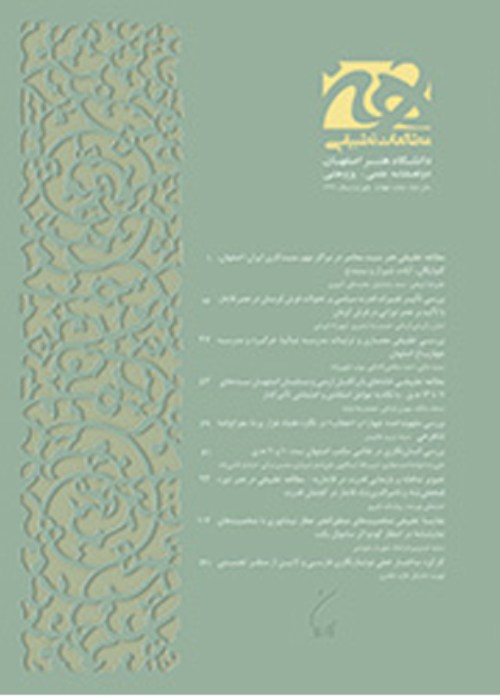Study of Four Persian Paintings of Qajar Era according to the visual perception theory of Ernest Hanes Josef Gombrich's (Case study: " Farhad carries Shirin's horse on his back")
Author(s):
Article Type:
Research/Original Article (دارای رتبه معتبر)
Abstract:
The perception and interpretation of artworks take place in an interactional process so that it is not possible to separate one from another. A scientist like Ernest Gombrich propose this issue to refute the visual perception theory. From this point of view, one should be able to recognize the oneness of the themes in representative works of art that have a similar theme, regardless of differences in style personal background of the artist or his ability to real imaging. In the next step, provided that the work of art is connected to the literary text and through a dominance over written knowledge, it should prepare us with reaching to the occult meaning behind it. In order to investigate this approach, this study seeks for answering this question: How would it be possible to understand the oneness between literary story and the interpretation of the pictorial content in four Qajar Pesian paintings of Farhad carrying Shirins horse on his back, with regard to Ernest Gombrichs visual perception viewpoint? With a comparative-analytical method and use of documentary studies, the authors objective is to illustrate, in a qualitative way and through an accurate attention to the unique stance of Gombrich in the field of visual perception, in first step and through comparing four Persian paintings of Farhad and Shirin, due to the existence of essential visual components, that the oneness of theme can be established despite the differences in style and presence or absence of some elements. Although the principal indices are depicted in different ways, in second step the depiction of some of the elements has been overlooked or the pomposity of some of the details has been increased, in comparing the depiction with the story narration, but the congruency between the pictorial signs and the theme is noticeable. The drawn conclusion is that in observing the general contexture of an image, perception and interpretation were perceived simultaneously. This is the phenomenon which allows the capability to recognize the figures and reaching tenors of depiction; as in depicting of one issue, human beings can consciously and through distinction of main components identify the oneness of the themes from different representation, a problem whose significance is revealed in visualized arts through selective studying in this inquiry.
Keywords:
Qajar , Persian painting , Ernest Gombrich , Shirin , Farhad
Language:
Persian
Published:
Journal of Motaleate-e Tatbighi-e Honar, Volume:7 Issue: 13, 2017
Page:
15
magiran.com/p1769618
دانلود و مطالعه متن این مقاله با یکی از روشهای زیر امکان پذیر است:
اشتراک شخصی
با عضویت و پرداخت آنلاین حق اشتراک یکساله به مبلغ 1,390,000ريال میتوانید 70 عنوان مطلب دانلود کنید!
اشتراک سازمانی
به کتابخانه دانشگاه یا محل کار خود پیشنهاد کنید تا اشتراک سازمانی این پایگاه را برای دسترسی نامحدود همه کاربران به متن مطالب تهیه نمایند!
توجه!
- حق عضویت دریافتی صرف حمایت از نشریات عضو و نگهداری، تکمیل و توسعه مگیران میشود.
- پرداخت حق اشتراک و دانلود مقالات اجازه بازنشر آن در سایر رسانههای چاپی و دیجیتال را به کاربر نمیدهد.
In order to view content subscription is required
Personal subscription
Subscribe magiran.com for 70 € euros via PayPal and download 70 articles during a year.
Organization subscription
Please contact us to subscribe your university or library for unlimited access!



